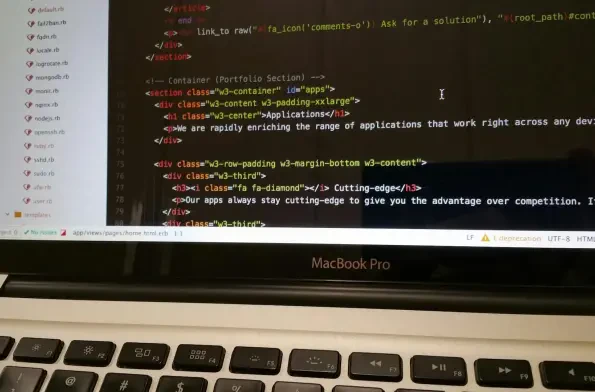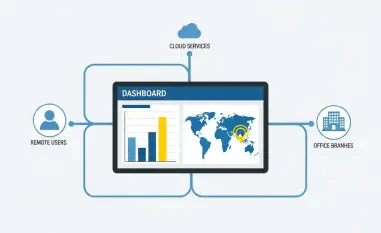A Critical Flaw in Enterprise Update Management
In the heart of enterprise IT environments, a silent threat has emerged, compromising the very system designed to keep networks secure. Windows Server Update Services (WSUS), a cornerstone for managing Microsoft updates across vast organizational networks, has been found to harbor a severe vulnerability, identified as CVE-2025-59287. This flaw, actively exploited by malicious actors, poses an unprecedented risk to countless organizations worldwide, potentially allowing attackers to control entire networks through a single breach. The urgency of this issue cannot be overstated, as it directly impacts the integrity of critical infrastructure.
This review delves into the specifics of this vulnerability, exploring its technical underpinnings and the broader implications for cybersecurity. With the US Cybersecurity and Infrastructure Security Agency (CISA) adding this flaw to its Known Exploited Vulnerabilities (KEV) catalog, and security researchers reporting real-time exploitation, the stakes are high. The following analysis aims to unpack the severity of this threat, assess the response from Microsoft and security experts, and provide a clear perspective on safeguarding systems against such risks.
Technical Analysis of the Vulnerability
Unpacking the Deserialization Flaw
At the core of CVE-2025-59287 lies a critical deserialization of untrusted data flaw within WSUS, enabling unauthenticated attackers to execute remote code with system-level privileges. This vulnerability specifically targets the GetCookie() endpoint, where maliciously crafted encrypted cookies can be sent to exploit the system. Such a mechanism bypasses traditional authentication barriers, granting attackers full control over the compromised server without any prior access or user interaction.
The implications of this flaw are profound, as it transforms a tool meant for secure update distribution into a potential attack vector. Security researchers at Huntress have detailed how this exploit can be initiated with minimal effort, highlighting the ease with which attackers can infiltrate systems. This technical simplicity, combined with the elevated privileges gained, marks this vulnerability as one of the most dangerous in recent memory for enterprise environments.
Exposure Through Default Configurations
Compounding the issue is the exposure of WSUS instances on default ports 8530 and 8531, often left accessible over the internet due to misconfigurations or oversight. These ports, integral to WSUS functionality for update management, become prime targets for scanning and exploitation by threat actors. Many organizations fail to restrict access to these entry points, inadvertently inviting unauthorized access to critical systems.
The lack of necessity for user privileges or interaction further amplifies the risk, as automated scripts can exploit this flaw at scale. This accessibility underscores a broader challenge in securing administrative tools that are inherently designed for internal use but often exposed due to network design flaws. Addressing this requires not just patching but a reevaluation of how such services are deployed and protected in networked environments.
Severity and Real-World Implications
Assessing the Threat Level
The severity of CVE-2025-59287 cannot be understated, given its potential to compromise entire networks through a single breached WSUS server. By exploiting this vulnerability, attackers can distribute malicious updates across an organization, effectively weaponizing a trusted update mechanism against its users. This capability poses a catastrophic risk, particularly to large enterprises where WSUS manages updates for thousands of endpoints.
Expert voices, such as Patrick Münch, CISO at Mondoo, have raised alarms about the scale of damage possible, especially in federal and corporate systems with extensive reliance on networked infrastructure. CISA’s response, setting a strict deadline of November 14 for federal agencies to patch, reflects the gravity of this threat. The urgency is clear: unmitigated, this flaw could serve as a gateway for widespread cyberattacks.
Evidence of Active Exploitation
Reports from security firms like Huntress confirm that this vulnerability is not a theoretical concern but an active battlefield. Attackers are already targeting exposed WSUS instances, leveraging the flaw to gain unauthorized access and control. These real-world exploitation cases highlight the immediate danger to organizations that have yet to secure their systems, particularly those in sectors with high connectivity and critical operations.
The ripple effects of such breaches extend beyond individual organizations, potentially disrupting supply chains and public services if critical infrastructure is impacted. This active exploitation serves as a stark reminder of the speed at which vulnerabilities can be weaponized, leaving little room for delay in response. The window for mitigation is narrowing as threat actors refine their approaches to exploit this flaw on a larger scale.
Mitigation and Protective Measures
Microsoft’s Response and Patching Efforts
In a swift reaction to the discovery of CVE-2025-59287, Microsoft issued an emergency out-of-band update to address the deserialization flaw. This patch aims to close the loophole that allows unauthenticated remote code execution, providing a direct fix for affected systems. Organizations are strongly advised to apply this update immediately to prevent potential breaches through the vulnerable endpoint.
However, patching alone may not suffice if systems remain exposed due to network configurations. The effectiveness of Microsoft’s response hinges on the speed of deployment across diverse enterprise environments, where update rollouts can sometimes face delays due to operational constraints. Timely application of this fix remains the first line of defense against ongoing exploitation attempts.
Expert Recommendations for Network Security
Beyond patching, security experts from Huntress and HawkTrace emphasize the importance of isolating WSUS infrastructure to minimize exposure. A key recommendation involves blocking inbound traffic to TCP ports 8530 and 8531 for all but essential connections, ensuring that only trusted management hosts and Microsoft Update servers can access these ports. This measure significantly reduces the attack surface for potential intruders.
Additionally, organizations should conduct thorough audits of their network configurations to identify and secure any exposed WSUS instances. Implementing strict access controls and monitoring for unusual activity around these services can further bolster defenses. These proactive steps, combined with the patch, form a comprehensive strategy to mitigate the risks posed by this critical vulnerability.
Broader Trends in Infrastructure Security
Rising Vulnerabilities in Administrative Tools
The emergence of CVE-2025-59287 reflects a troubling trend of increasing vulnerabilities in critical infrastructure tools like WSUS, which are often overlooked as potential attack vectors. These administrative systems, designed to streamline IT operations, can become single points of failure if not adequately secured. The growing sophistication of cyber threats only heightens the need for robust protection mechanisms in such tools.
This incident underscores a systemic challenge within cybersecurity: the balance between functionality and security in enterprise software. As tools like WSUS become integral to operations, their vulnerabilities can have cascading effects across industries. Addressing this requires a cultural shift toward prioritizing security in the design and deployment of administrative systems.
Unified Call for Enhanced Protections
Security professionals and agencies like CISA are united in their stance on the urgency of addressing flaws in critical software. The active exploitation of this WSUS vulnerability serves as a wake-up call for organizations to reassess their security postures, particularly around tools that manage updates and configurations at scale. The consensus is clear—reactive measures are no longer sufficient in the face of such high-impact threats.
Looking ahead, there is a pressing need for industry-wide collaboration to develop more resilient update mechanisms and security protocols. This unified perspective highlights the importance of preemptive action, ensuring that vulnerabilities are identified and mitigated before they can be exploited on a large scale. The protection of critical infrastructure demands nothing less than a concerted, forward-thinking approach.
Final Verdict and Path Forward
Reflecting on the comprehensive review of the Windows Server Update Services vulnerability, it is evident that CVE-2025-59287 stands as a severe threat to enterprise security, with active exploitation underscoring the immediate danger. Microsoft’s rapid deployment of an emergency patch is a critical step, yet the effectiveness depends heavily on organizations’ prompt implementation. The insights from security experts provide a robust framework for mitigation, emphasizing both technical fixes and strategic network isolation.
Moving forward, the focus should shift to integrating advanced security protocols into the development of tools like WSUS, ensuring that such critical systems are fortified against future exploits. Organizations must prioritize regular security audits and adopt a proactive stance, anticipating vulnerabilities before they manifest into breaches. As the cybersecurity landscape evolves, investing in training and resources to secure administrative tools will be paramount to safeguarding networked environments from similar threats in the years ahead.













